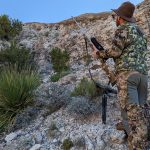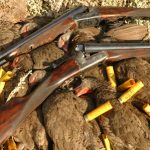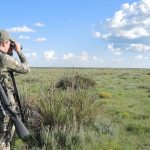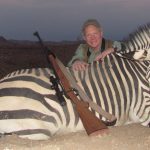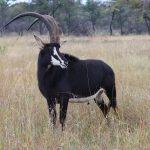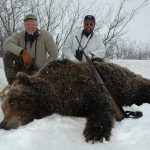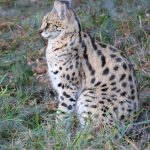This huge antelope is a challenge to hunt and fantastic on the dinner table.
We were looking for a big kudu. If kudu is on license and your menu, you’re always looking for a big kudu! We were headed west, about an hour before sunset. Kudu o’clock was coming fast, our intention to use the last rays to glass a big north-facing ridge.
Fred Burchell hissed, “Eland,” and eased the Land Cruiser to a halt. Three bulls off to the right, across a brushy flat, trotting along the base of a rocky ridge. Few animals are as switched-on as eland. I didn’t move at first, expecting them to continue that mile-eating eland trot, around the corner of the ridge and gone,
Amazingly, they stopped under a scruffy tree and began to feed. Three hundred yards. When Mother Nature offers a gift, one shouldn’t kick sand in her face.
Now we moved. Slowly and quietly, Fred out the right and back to grab sticks, me out the left with rifle and forward, hoping to clear some brush. No way this would go down—the elands were sure to run—but we had to go through the motions.
Fred was with me in an instant. Bullet path clear, rifle up and steady, three mature eland bulls standing without a care in the world. The only slight problem: The low sun was straight into the scope. I’d have them, then the scope would go black. Then I’d have them again. “Which one?”
“Any of them. Let me look again.” Trust me, this is not a dilemma I’ve faced on eland. Then, “I think the bull on the left is the oldest.”
He was standing broadside, head to the right. Then the scope went black again. Fred Burchell is young, but I’ve known him for years, good hunter and PH. Seeing the problem, he took off his cap and angled it between objective lens and sun.
Now I could see them. Same position, bull on the left, other two just in front of him, clear. Conscious that I wasn’t shooting a big gun, I held at the back of the burly shoulder, just below the midpoint.
The shot felt good, impact sounded solid. The eland didn’t run. The chosen bull simply swapped ends, now facing left. Fred confirmed, “On the left. Shoot him again.”
Same hold on the opposite side, couple inches higher in case I’d misjudged the drop. Same weird result, no immediate reaction. I had just started a third trigger squeeze when he swapped ends once more, and went straight down.

The eland is not the most beautiful of Africa’s antelope. He is not as dramatic as a greater kudu, as stately as a waterbuck, nor as breathtakingly majestic as a sable. He is the largest African antelope. Mature bulls vary in size and weight. References start at 1,300 pounds. This is minimal. I’m convinced that outsized bulls on good feed can top a ton. Live weights are elusive but, visually, a mature eland bull is bigger than a Cape buffalo.
Also, tastier. To me, eland is the finest wild meat in the world. Tender, flavorful, almost marbled like good beef. My advice to anyone considering taking an eland: Try to get him in the first few days. You’ll eat well the rest of the safari.
Sound logic, difficult to pull off. Although widespread, the eland is difficult to hunt. Not only are they (usually) wary, they cover a lot of country with that ground-eating trot. There’s no predicting where or when you might run into them. Unlike smaller antelopes, eland leave tracks that can be followed. I’ve tracked both common and Lord Derby elands for many miles, and I’ve stalked others over hill and dale.
This was the first eland I’ve ever taken in a pure chance encounter. Mother Nature offered; we accepted. Not something to be proud of; sometimes you just get lucky. I was at the Burchell family’s Frontier Safaris in South Africa’s Eastern Cape, a big area running from high mountain to deep valley. Eland need a lot of room, so I wouldn’t say they’re plentiful, but they’re around. I’ve taken eland there before, after careful looking. A year earlier, we hunted hard for eland for much of the safari, never got one. You never know.
This awesome bull was a wonderful gift at sundown on the second day. We were going to eat well. First, we had a problem: Fred’s winch was out and we needed to load him. It took some bush engineering, multiple attempts, and a lot of grunting and straining. Fortunately, there were five of us (four young and strong). We got it done just an hour after dark.
It seems to me a disservice to call this animal the “common” eland. There is nothing common about it. However, there must be nomenclature to distinguish Taurotragus oryx from Lord Derby giant eland, T. derbianus. Despite the name, I’m not convinced that giant eland are consistently bigger in the body. For sure, they are bigger in the horn; giant eland horns start where common eland horns stop. The giant eland also has much more color: black nose, black neck collar (in winter coat), and brilliant white side stripes. They are geographically separated, with no hybrid zone. Today, their range is restricted to Central African Republic and Cameroon, above the big forest, with a small population remaining far to the west in Senegal.
Although habitat differs, hunting all eland is similar: usually difficult. We divide common eland into three races. Since I was in South Africa’s Eastern Cape, mine was unquestionably a Cape eland. Shortest horns, smallest body, although outsized bulls may dispute this. Our bull was normally big, not outsized, otherwise we’d never have loaded him whole. The biggest difference: Mature Cape elands have no vertical body stripes. Color is generally tan or fawn, although older bulls can run to gray, what they call “blue bulls.” Cape elands are found throughout South Africa, southern Botswana, and most of Namibia except the far north.
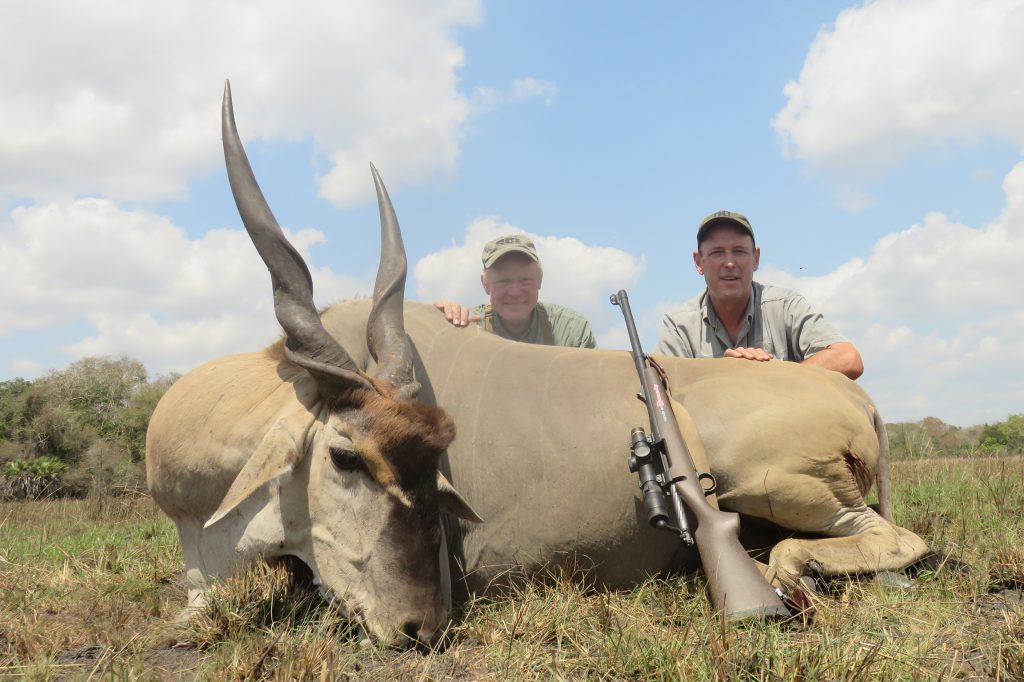
To their north, up through Mozambique and Zambia, is the Livingstone eland, with defined vertical white stripes. Livingtone eland has the longest horns among the common eland, and is (again theoretically) the largest in body. Off to the northeast, in Kenya and Tanzania, elands are considered East African or Paterson eland. The book says they have vertical white stripes, but there are variances. The bull I took in Kenya, near Tsavo, did not, but I’ve seen bulls in Tanzania that did. Often, the stripes are so muted as to be almost invisible.
Namibia has a hybrid zone between Cape and Livingstone. Per the books, only the eland in the very far north are Livingstone. However, in central Namibia, south of Etosha, I’ve seen bulls that had faint vertical stripes, and others that didn’t.
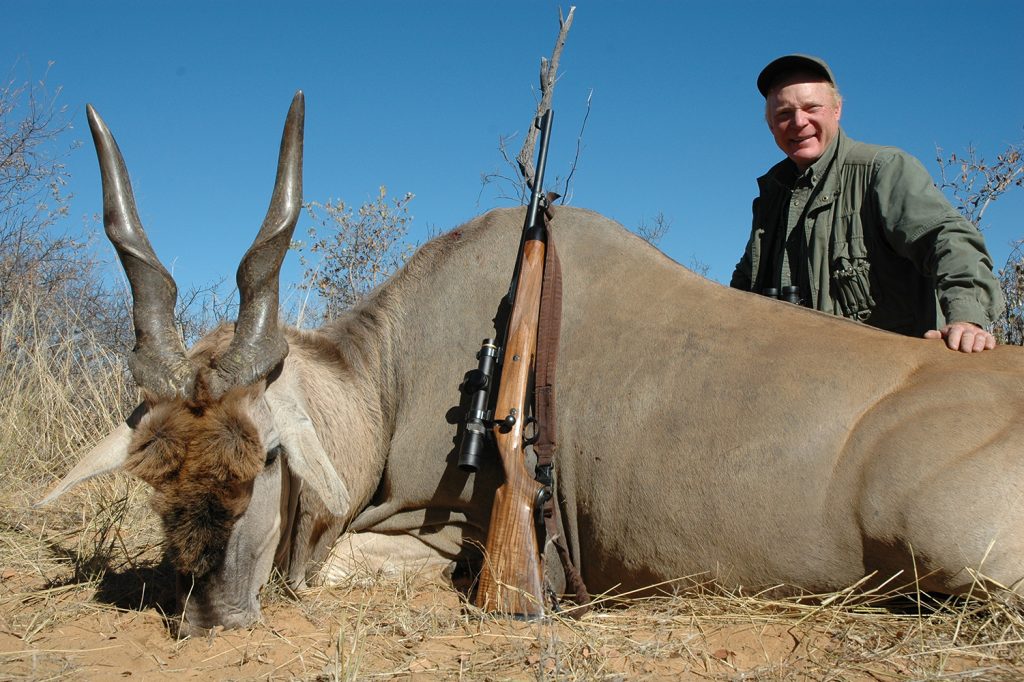
Doesn’t matter. All the eland are tasty, all mature bulls are magnificent, and the bull I lucked into was a dandy. We had a couple young guys with us, so I’m not sure if Fred was speaking for my benefit or theirs, but what he said as we were admiring our eland is worth repeating:
“Here’s what you look for in an eland bull. First, body. Mature bulls are visibly larger than females, with massive shoulders and a big dewlap. Second, color. Most bulls grow darker as they age, and stand out in a herd. Third, look for the forehead brush, darker and longer on dominant bulls. Finally, look at the horns.”
With eland, males and females grow similar horns. In a herd, it’s not easy to sex them, and more difficult with younger bulls. A mature bull will have significantly heavier horn bases, and usually a well-defined spiraling keel on the lower horn. Older bulls wear down their tips, so often have horns that are short and very thick; cow horns are often longer, but always thinner. My bull had just started to wear his tips. For perfection, he could have been a year or two older, probably would never have been longer. Another saying: Don’t look a gift eland in the mouth.
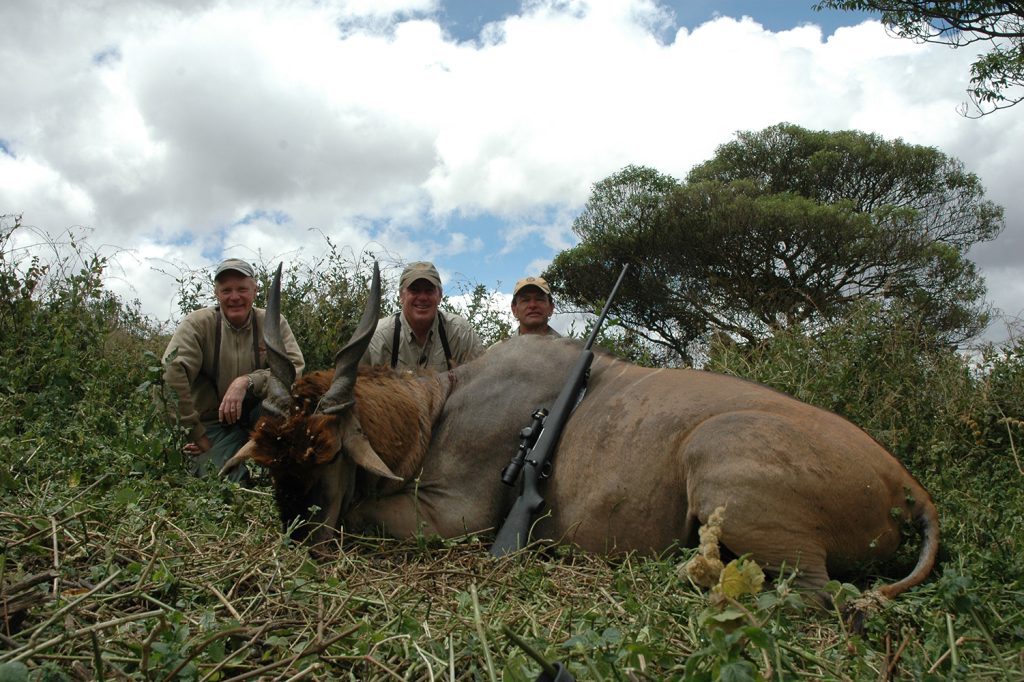
I’ve shot a couple eland with fast .30s and heavy bullets, couple more with medium magnums (8mm and .33). That said, eland bulls are huge, and I believe strongly they’re in “.375 territory.” We weren’t looking for eland, and I used what I had. Which was a 7mm Remington Magnum with too-light 150-grain bullets. Legal, but risky. That’s why I was careful to place my shots tight behind the shoulder: I doubted the bullet would penetrate the heavy shoulder. On a behind-the-shoulder shot, I knew the bullets wouldn’t exit, but believed they would reach deeply into the lungs, which is what both bullets did. There was not much reaction, but he was down on the spot.
I don’t recommend being undergunned for eland—or anything else. But I wasn’t going to kick sand in Mother Nature’s face, and I was looking forward to some fine eland steaks.



